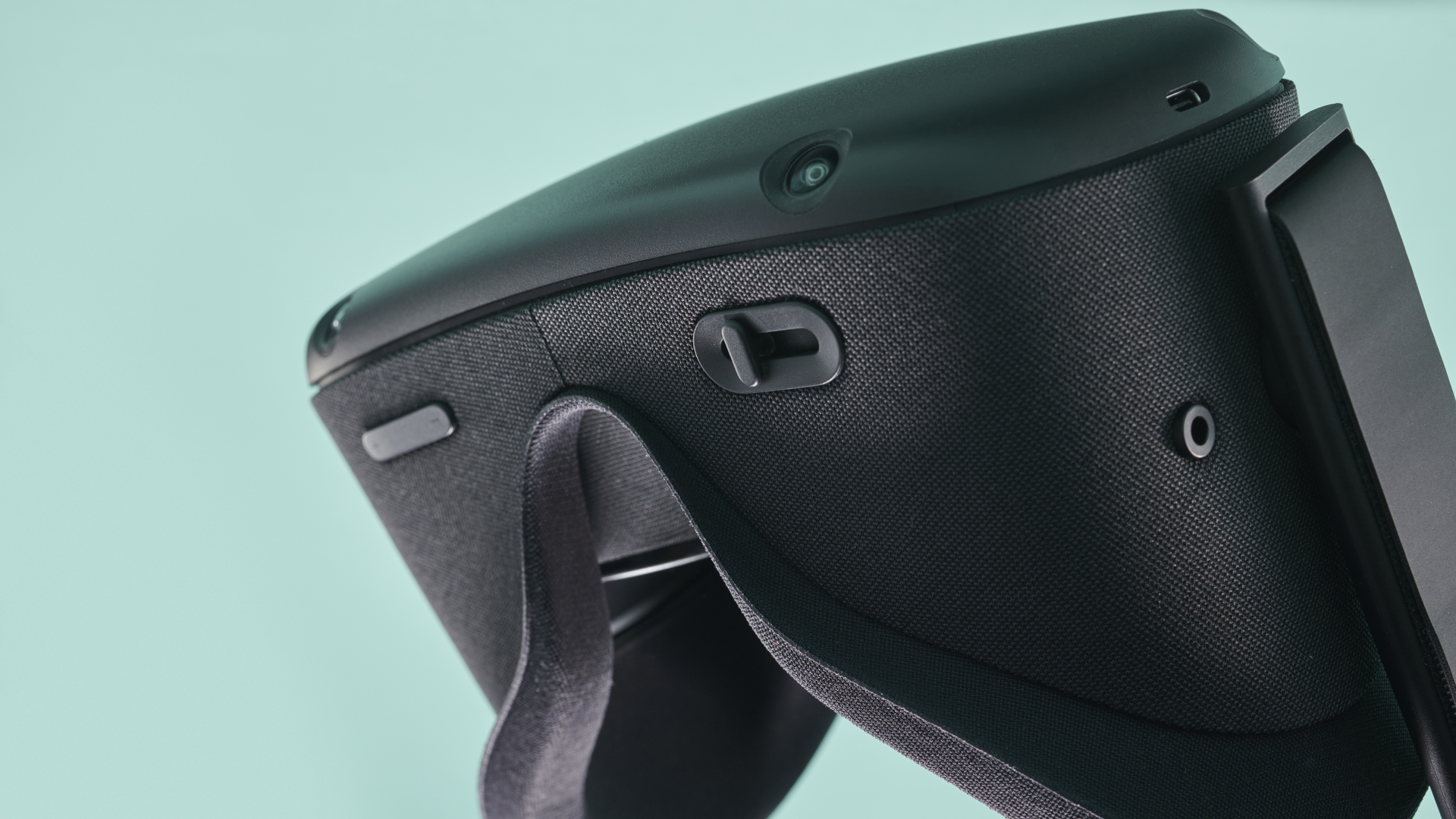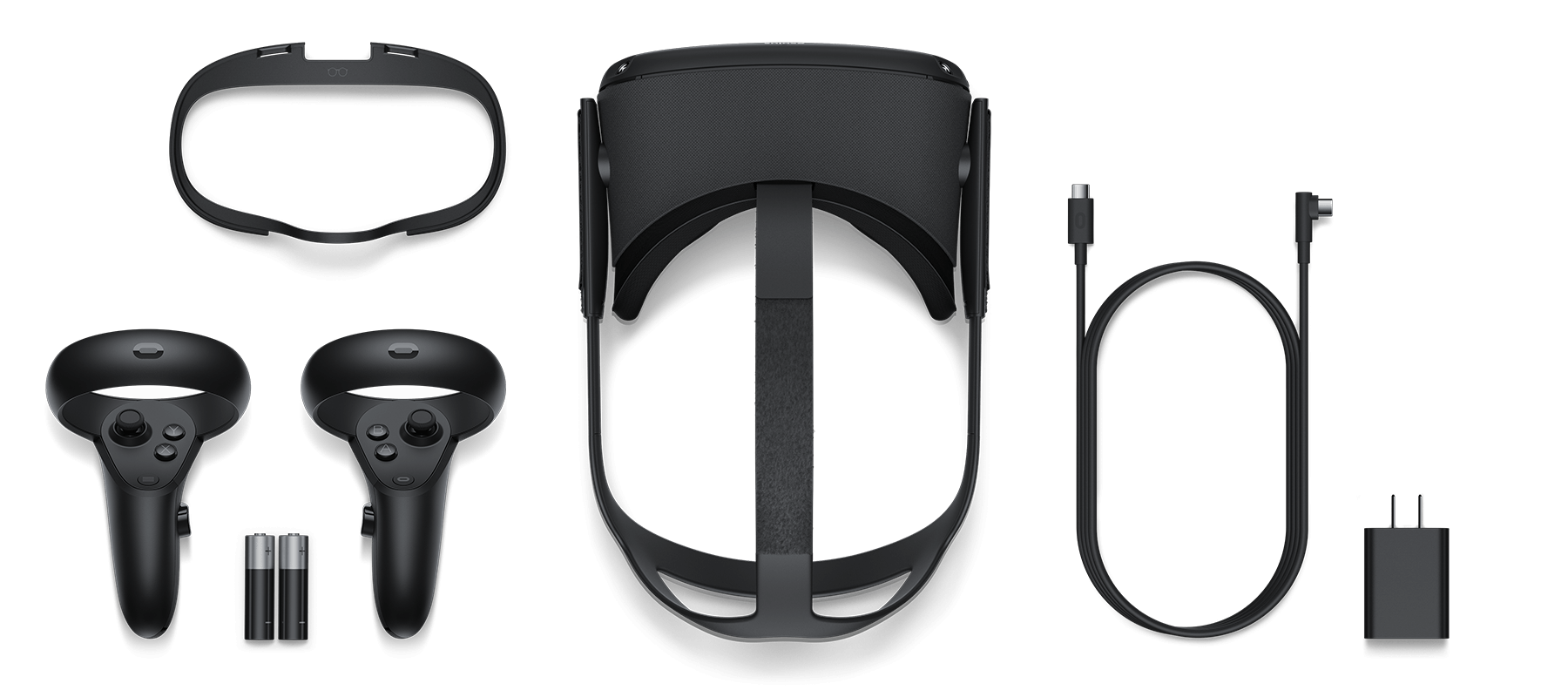Oculus Quest review: forget PlayStation VR – this is the new standard
High-end wireless VR with no PC and no cables… the revolution is FINALLY here


The Oculus Quest is the best all-in-one VR solution bar none. Technically impressive, easy to use, and mind-blowing to experience.
-
+
Exhilarating wireless experience
-
+
Light and comfortable in use
-
-
Tiny amount of light leakage
-
-
Quest Store means repurchases for existing Rift customers
Why you can trust T3

Writing this Oculus Quest review has been one of the most fun times we've had with a new bit of tech in years. Let's just get that up front – this thing is an absolute blast.
Until now, PlayStation VR has been the easiest virtual reality system to recommend, because it only needs a PS4 to power it, it's affordable, and it's works really well… but it suffers from its low-resolution screen, lake room-scale freedom to move around, and that it's heavily tethered to the console. This, somehow, was the easiest-to-use solution available.
And then suddenly, Oculus Quest arrives, cuts every wire you ever thought you needed, and quietly reinvents virtual reality as a whole at the same time. Make no mistake, Facebook’s all-in-one device is a true game changer. This is how it was always meant to be.
On paper it almost seems too good to be true. A natural follow up to the less games-focused but also wireless Oculus Go, the Quest squeezes a Snapdragon processor into its headset for near PC-level experiences, comes with two Oculus Touch controllers, and it delivers true room-scale VR without a base station in sight.
Using Oculus Insight - the technology that cancelled out the need for external sensors for the most recent Rift S PC headset - the Quest has four sensors on the front to track your movements in the real world.
Set up a clear play space and the headset enables you to spin in any direction, to duck behind cover, or just giddily step in and out of the path of slow motion bullets in Superhot without a single thought of tripping or tying yourself in knots. Gleefully screaming about how free and untethered you feel at the same time is entirely optional.
Oculus Quest review: Price and availability

The Oculus Quest starts from £399, which is a complete package including headset, controllers and charging cables. That model comes with 64GB of storage.
Get all the latest news, reviews, deals and buying guides on gorgeous tech, home and active products from the T3 experts
There's also a 128GB version, available for £499. That's a pretty steep price difference, but you can't expand the storage in any way, so if you expect to be a heavy user, it might be worth future-proofing with the bigger size.
That said, the biggest games currently available are around 3GB, so it’s reasonably safe to go for the smaller option and save your cash for new games, if you prefer.
At the moment, there aren't many places you can buy the Oculus Rift for these prices, other than the Oculus Store:
It looks like it'll be available at more stores, including all the usual high-street and online faves, in mid-July – check back here to see which offers it for the best price!
Oculus Quest review: Build and comfort

The Quest headset feels confidently futuristic in the hand. A mix of fabric and plastic on the outside removes the clunky but very expensive toy aspect of so many other VR headsets, and the soft foam interior makes for a snugly, comfortable face hug.
Mercifully, and despite its all-in-one nature, the weight of the Quest is never exhausting. Lie back on a sofa to watch Netflix and you might notice some increased pressure on your cheekbones, but for standing up play, there’s no more weight here than with any of the existing VR headsets.
Donning the Quest and finding the right fit comes down to two rubber straps on each side and one overhead, all of which fasten with velcro. These are intuitive enough and once comfortable, a focus slider on the underside means it’s easy to bring everything perfectly into focus.
Once it’s on, VR’s eternal bugbear, light leakage, slightly raises its ugly head via a small gap around the nose, but chances are you’ll only ever notice it when the screen is dark. It also serves as a great reminder that there is a real world around you that isn’t just your Ready Player One fantasy.
Controls on the headset are minimal with just a power button and volume rocker, but you won’t find yourself using the power button much. Why? Because the Oculus Quest smartly recognises when you’re wearing it and turns on and off accordingly. The included Touch controllers are a tweaked version of Oculus’ existing in-game hand replacements.
The main difference here is that a plastic tracking loop goes around the front of the controller instead of the back. The rest is largely unchanged, with a satisfying weight, an analogue stick for each thumb, and both trigger and grip buttons for intuitive interactions. These are still the VR controllers to beat, and it’s their inclusion that makes the Quest such a thrilling package.
Each taking a single AA battery and complete with (a very necessary) wrist strap, the Oculus Touch controllers feel like an extension of you almost dangerously quickly. Whether you’re picking up paper planes to throw or dual wielding pistols like John Wick, it feels like you are constantly and effortlessly connected to the Quest’s world.
Speaking of connecting, only the necessary charging wire haunts proceedings, but even that is almost apologetically long, meaning you could happily stand and play even when the device is charging.
Keep it disconnected as intended and the headset itself lasts for between two and three hours before it needs more juice, and there’s a useful display in the menu screen that lets you know how it’s doing.
Two hours of charge fills it up from empty, so taking a natural break between Beat Saber sessions actually doesn’t feel like too much of a chore.
Oculus Quest review: Setup and gaming

Anyone who has set up any form of room-scale VR will know that even the thought of it is sometimes exhausting. Like the gym, it’s worth it when you get there, but endless sensors and trying not to create a Saw-like trap of wires is a challenge.
The Quest makes this process smugly simple. You’ll only need to pair with the Oculus smartphone app the very first time you set it up. Every time after that is just a case of donning the headset, picking up your controllers – helpfully shown via a camera that enables you to see the room around you when necessary – and mapping out what Oculus calls its Guardian system.
While you can set the headset for a more stationary experience, it’s much more fun to clear a large space to walk around in.
Protecting your TV and/or sleeping pet is easy: the Quest only requires you to draw your ‘safe space’ area on the floor in glowing blue with a controller.
Veer into boundary territory mid-game and a red mesh wall appears in front of you as a reminder of your safe space. Go further and the Quest will stop the game and show you the real world.
This is VR with no waiting, no mess, and no dust-gathering accessories. Don the Quest and off you will go, galloping into a wire-free future. Just mind the OLED TV in the corner.
Oculus Insight tracking isn’t all that’s arrived from the Quest’s bigger, more expensive brother… Just as you would find with the Rift S headset, the Quest has positional audio built into the headband itself.
Surprisingly nuanced speakers pump sound directly into your ears without the need for plugging in a headset. While there is support for headphones – in fact, the Quest sports two 3.5mm jacks, one on each side – this fresh new audio solution frees your ears in the same way as the Quest removes your wire leash.
VR, by its nature, simultaneously makes you somewhat blind and deaf, closing you off from the outside world. In contrast, this headphone-free, crisp audio experience means that whether you’re listening to bullets whizz by in Superhot or the crunchy bass of Beat Saber, you’re still part of the real world.
Of course, you can still pop in headphones to truly lose yourself, but it’s a surprise to suddenly feel plugged in; wires don’t feel like they belong in this brave new cable-free world.
What about the games themselves? The Quest currently has in excess of 50 different titles sitting in the Oculus Store. It’s here, whether in your app or the headset, that you can set everything downloading or try some demos.
At this point it’s important to note that games need to have been specifically created for the Quest. Oculus heavy hitters such as Robo Recall, Beat Saber, Job Simulator and Superhot are all present and correct, but you will need to buy them again for the Quest headset even if you’ve bought them before. And they’re not exactly cheap, either. It’s not a huge issue, given that most people will be buying for the first time, but it’s worth bearing in mind if you’re looking to upgrade.
So the big question, then, is how do these games compare to their original forms? Visually, there is obviously a difference between Quest games and something like the Rift S or HTC Vive Pro when connected to a high-end PC, but the 1440x1600 per eye resolution means everything looks crisp and sharp.
Compare this to the seemingly paltry 960x1080 offering of PSVR and it’s astonishing that this level of visual clarity is smoothly delivered on a standalone headset.
The photo-real 4K processing power isn’t here, but our favourite VR games don’t need to be Ultra HD to be an exhilarating escape. Is a reduction in graphical prowess worth the trade off of a £1,000+ PC and endless cables? Absolutely, without question.
Oculus Quest review: Verdict

Get your calculator out and the Oculus Quest is a VR no-brainer. At £399 for the 64GB headset, this complete solution is only £100 more expensive than the adapter to make the HTC Vive Pro wireless… excluding the headsets, controllers and PC.
While there is clearly no greater visual experience than 4K, the Oculus Quest is the best chance at everyday VR becoming the norm.
Perfect wireless room-scale tracking means that every movement in VR translates flawlessly, and the library of games available to play will only get bigger as more compatible titles arrive on the store. This is it, folks: the virtual reality revolution has arrived at last.
Louise Blain is a journalist and broadcaster specialising in technology, gaming, and entertainment. She has a weekly consumer tech slot on BBC Radio Scotland and is the presenter of BBC Radio 3's monthly Sound of Gaming show. She can also regularly be found on BBC Radio 4, BBC Five Live, and The Evolution of Horror podcast as well as writing for GamesRadar and NME. Louise loves finding ways that tech can make our lives better every day and no, she doesn't have enough smart lighting yet.
